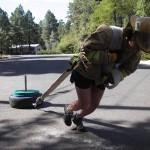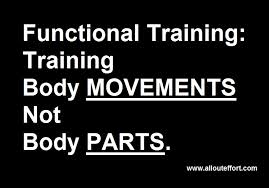Today ’s topic is functional training; and yes I know when someone whispers the words functional training people immediately think CrossFit. But, that is a stereotype or way of thinking which we should get away from. Functional training is any kind of exercise training that has direct transferability to an everyday task or performance based movement. So what does this mean to avid exercisers, athletes, and the special populations? The answer is that functional training is for everyone that which wants or needs to become proficient in a task that which could be as complex as a CrossFit Competition or as simple as activities that help the elderly at daily chores.
’s topic is functional training; and yes I know when someone whispers the words functional training people immediately think CrossFit. But, that is a stereotype or way of thinking which we should get away from. Functional training is any kind of exercise training that has direct transferability to an everyday task or performance based movement. So what does this mean to avid exercisers, athletes, and the special populations? The answer is that functional training is for everyone that which wants or needs to become proficient in a task that which could be as complex as a CrossFit Competition or as simple as activities that help the elderly at daily chores.
We touched on what functional training is, now let’s look at how to design a functional training plan. Everything with in functional training programs like other programs are designed around goals, or a daily task. So for example, firefighters will need to be able to carry and or drag a person out of a bad situation. Now that we got the task, how can an exercise mimic that task or situation? The best exercises that would have the best transfer to this task would be either a sandbag carry for distance or a sled pull.
On the other hand, functional training could be used to help an elderly woman become more independent and increase her quality of life by making daily activities  easier. For example, performing normal chair squats while holding a medic ball could directly transfer to picking up a bag of groceries off the floor and setting them of the kitchen counter.
easier. For example, performing normal chair squats while holding a medic ball could directly transfer to picking up a bag of groceries off the floor and setting them of the kitchen counter.
All Functional training is an exercise or training plan that has direct transferability to an everyday task or performance based task. It is not only for extremely athletes that compete in CrossFit but all so for the rest of the population as a whole. So, if you want to become more proficient in
a movement or task, functional training is what you are looking for.




